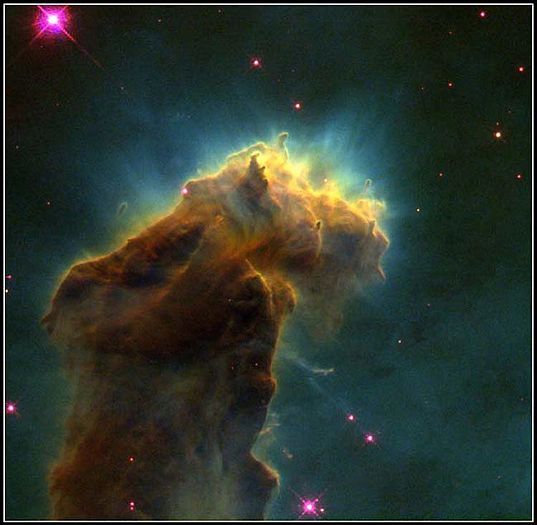
QS Nugget – star processes: Of the 90-some known natural-occurring elements plus all the other, man-made elements, nickel-62, iron-58, and iron-56 (in that order) have the greatest binding energies per nuclear particle,¹ at more than 8.7 million electron-volts (MeV). That is, the particles in the nuclei or center of those atoms are the most tightly “glued together” of any atoms.
Lighter elements, such as hydrogen, release energy by fusion, the joining together of nuclei to form a larger nucleus. Two hydrogen nuclei merge together to form a helium nucleus. Atoms much heavier than those listed above give off energy through fission. Fission is the breaking apart of a nucleus to form two or more smaller nuclei.
In between the atoms involved in these two energy-producing processes are iron and nickel. They are pretty much the end for both processes.
The driving force in stars is the release of energy that gives us light and heat. Most star processes slow considerably as iron and nickel build up.
1 Neutrons and protons
Note: You might also enjoy Difference between Fission and Fusion?
References:
